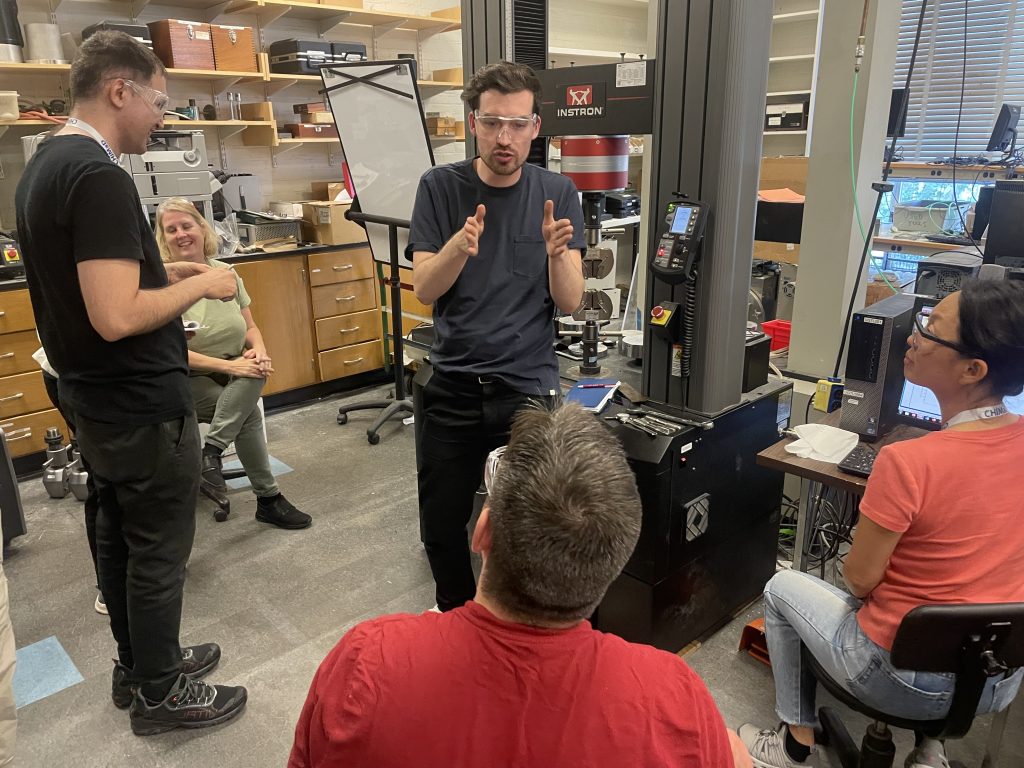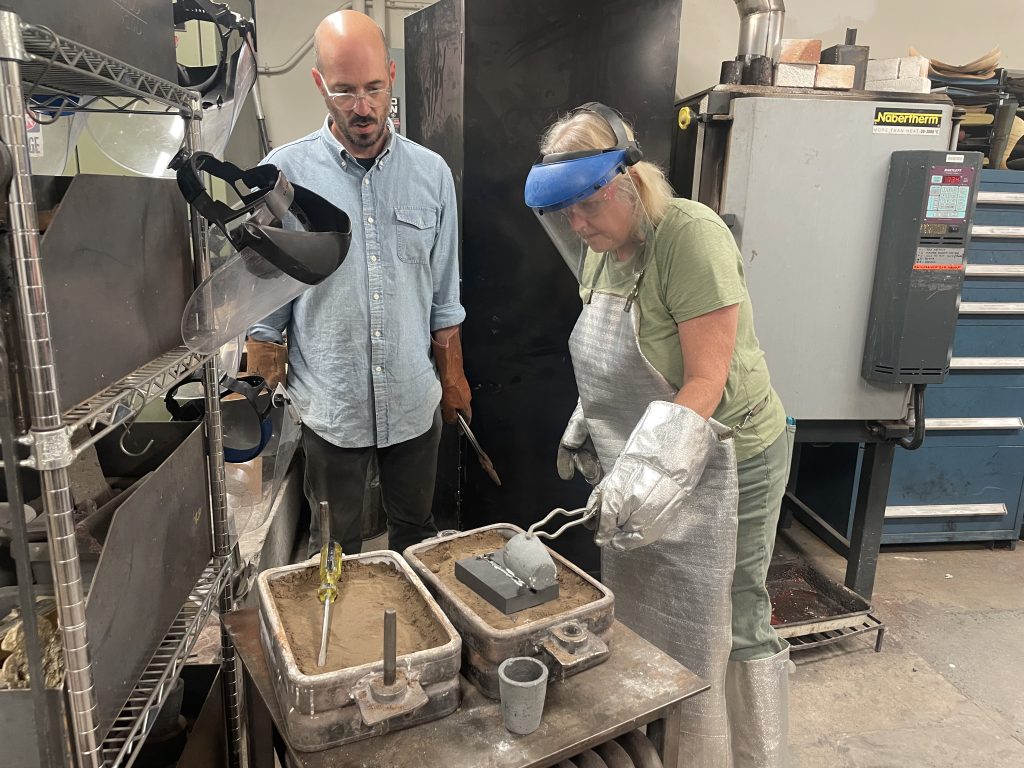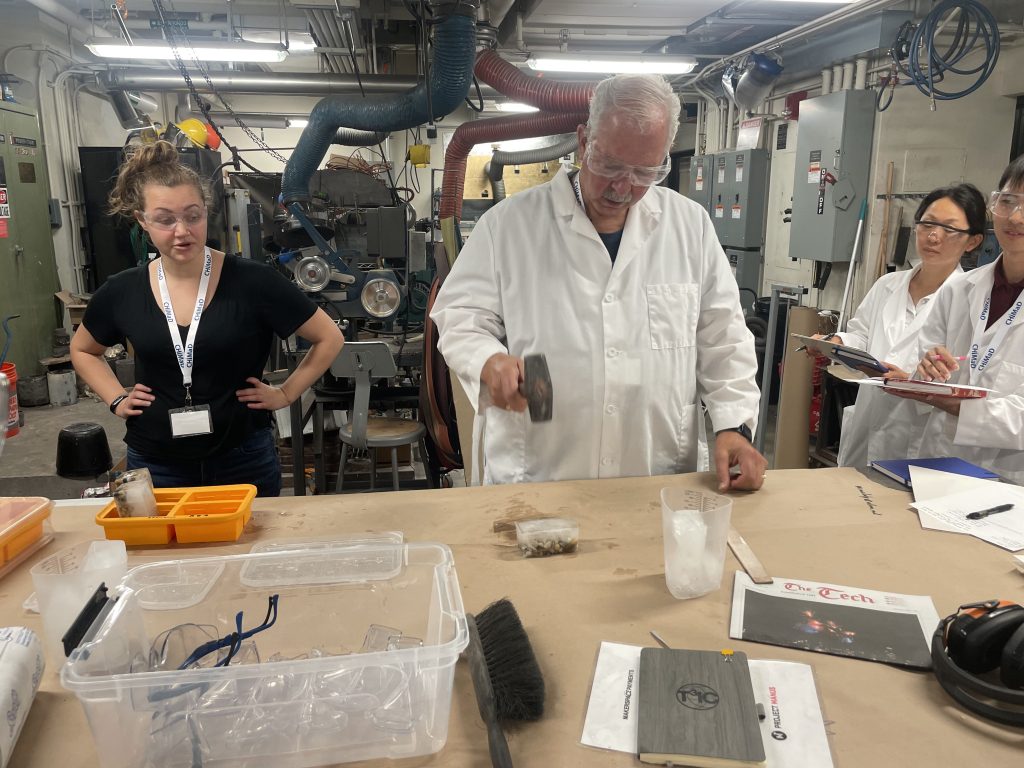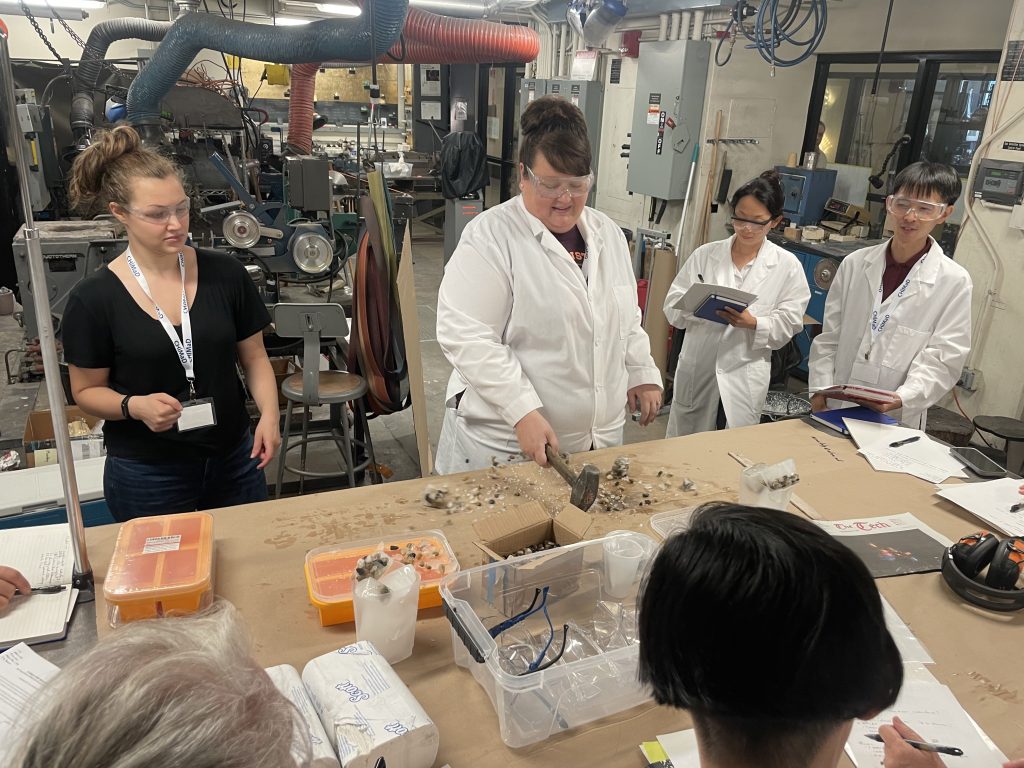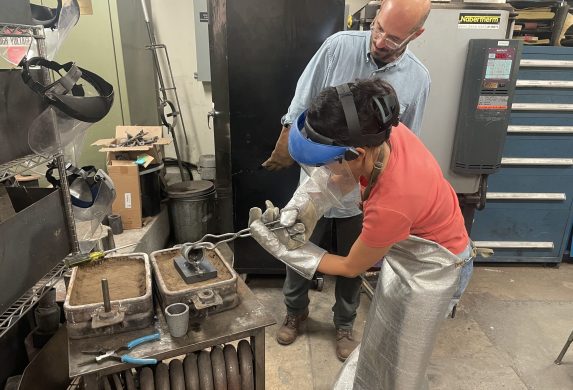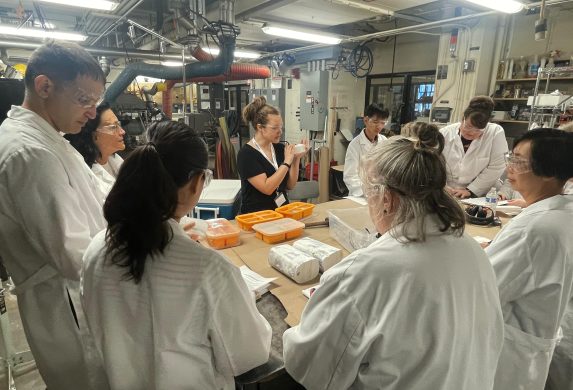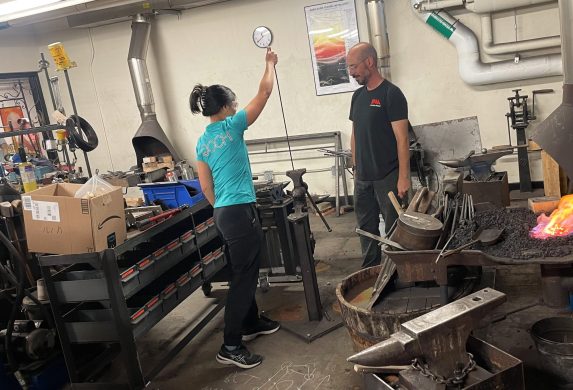Teaching material: MIT camp gives educators materials science skills
For the third year, a group of teachers spent a week at MIT designing and testing new materials, learning cutting-edge tools, and practicing easy-to-replicate experiments.
The Materials Genome Camp, managed at MIT by the Department of Materials Science and Engineering (DMSE)’s Professor Greg Olson and his research group, aims to equip teachers with skills in materials science and engineering that they can pass on to their students at home.
“This is the whole idea—getting the word out there about materials science,” said Julian Rackwitz, a graduate student in Olson’s group and coordinator of the camp. He remarked how students often arrive on the MIT campus without having heard of materials science and engineering.
“So how do you recruit in your field? That starts in high school. If people in a science class or an after-school club see something that gets them excited—that’s how they get started and go in this direction.”
With funding from the ASM Materials Foundation and the Center for Hierarchical Materials Design, the camp trains teachers in computational materials design, which involves computer-based simulations and models to understand and design new materials. It’s part of a larger family of camps that take place in the summer throughout the United States and a few Canadian locations.
The first camp at MIT was held in 2022. This year, 13 middle and high school teachers from the U.S. and Canada learned how to use Thermo-Calc software to design “Frankensteel,” a metal that can repair itself if it cracks.
In the foundry of DMSE’s Merton C. Fleming Materials Processing Laboratory, the teachers started their Frankensteel samples with wires made from a shape-memory material and poured molten metal over them. Guided all the while by volunteers—DMSE instructors and grad students—they later tested their samples using a tensile testing machine, which measures materials’ strength.
One change implemented in 2023 was a second round of casting and testing.
“Some of the feedback we got early on was that it would be nice to learn from your mistakes and iterate,” Rackwitz said. “There can be a lot of things that go wrong. For most of the teachers, it’s the first time doing the casting itself, doing the pouring. So some of them are excited to get a chance to redeem themselves.”
Camp-to-class science
Many teachers in the MIT program are no strangers to summertime science camps. Stacy Gates, a teacher at Fulton High School in Fulton, Illinois, has attended three other materials science camps, bringing back experiments and activities “to make the lessons more engaging, more interactive, with more real-world applications.”
Gates, who teaches chemistry, physics, forensic science—“all the sciences,” she said—has used what she’s learned to design a materials science course that fills a physical science requirement at her high school. She’s also incorporated elements in her other classes.
“So chemistry gets a little bit, physics gets a little bit,” she said. “Each year I go to a different camp and bring back something new that I can incorporate or add.” Over the years she’s picked up glass beadmaking, working the craft into a unit on glass, and Japanese Raku pottery, infusing that into lessons about ceramics.
In the MIT camp, Gates liked experimenting with reinforcing slabs of plaster and ice with various materials such as paper clips and wood. “That would be a great lead-up to when we talk about cement,” she said.
Hamed Shateri is also a regular at various science camps. The science teacher at Milliken Mills High School in Markham, Ontario, said almost everything he’s seen and done at the MIT camp can be brought back into the classroom, even to some degree mechanical testing, which tests the strength of metals by pulling and breaking them—involving huge, costly equipment that most schools don’t have access to.
Instead, schools can use inexpensive tools such as force meters, which can measure the amount of force applied to objects such as rubber bands or wooden sticks.
“We can come up with different ideas. We get the basics here and then apply it there,” Shateri said. “Working with ice, for example, is not the same as working with steel, but the idea is still transferrable. And at the level of high school, we want kids to understand the ideas more than anything else.”
Gates agrees. For her, the hands-on activities she takes to the classroom spark interest in students. If they’re working on, say, alloys and metals, “They can see, ‘Well, I want to be a welder, and this really fits in,’” said Gates, who lives in a part of Illinois with a strong manufacturing sector. “They really see the application of what they’re learning.”
For kids who favor art over science, Gates tells them, “‘Take materials science. We make pottery. We make glass beads. We work with polymers and do different things.’”
She was especially interested in a guest presentation by DMSE instructor and artist-in-residence Rhea Vedro, who teaches traditional metalworking and jewelry techniques, such as soldering, fabrication, and decorative metal shaping, as well as the cultural significance of materials.
“I thought, ‘How can I get jewelry as well in my classes?’ Maybe I can get in another area for kids to find that connection,” Gates said.
Higher education
Vedro, who supported instruction in the foundry for the camp, heating up kilns to high temperatures and helping the teachers move molten metal, said she’s happy to help create educational opportunities.
“I also remember what it feels like to come in fresh to this place and think, ‘What is happening?’” said Vedro, amid the brick furnaces and cast-iron tools in the foundry. “So it’s great to demystify a little bit and get the teachers doing hands-on projects that they can take back and hopefully replicate in their classrooms.”
Another volunteer, graduate student You Na Lee, echoed one of the camp’s main objectives—to increase visibility in materials science and engineering in school.
“Your high school teachers typically make or break your exposure to a specific field, and I really think these teachers are very excited about the field,” Lee said.
Karen Choo, a chemistry and ninth-grade science teacher who works at Milliken Mills High School in Ontario with Shateri, said aside from the activities and experiments she learned at the MIT camp, she values the insights and experience of other science educators.
“Just talking to the other teachers from all over and hearing how all their programs are set up and all the different things they’re doing, it’s just like, ‘Oh, right, that’s a great idea. I’ll do it that way,’” Choo said. “Having that sense of community and being able to access everybody’s ideas and pick their brains—there’s nothing that replaces that.”
